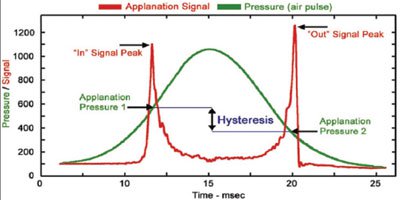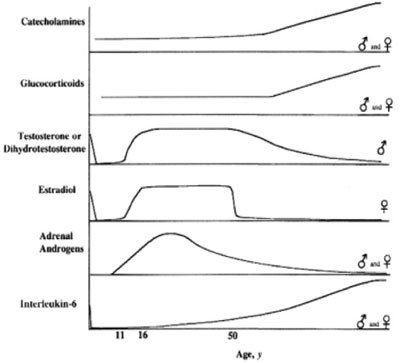Presenters discuss LASIK preop evaluation, postop management
Click Here to Manage Email Alerts
The use of a scoring system can help practitioners predict a potential LASIK patient’s risk for developing postoperative ectasia, according to a presenter at the San Francisco Optometric Continuing Education Symposium.
D. Rex Hamilton, MD, emphasized the importance of accurate screening and careful patient selection when recommending LASIK and endorsed the use of the Randleman Risk Score criteria to assess a patient’s risk for ectasia.
Randleman Risk Score criteria
According to Randleman Risk Score criteria, risk factors for ectasia include: abnormal topography, thin residual stromal bed, preoperative thin corneas, high refractive correction and young age. The risk score, although controversial, Dr. Hamilton said, can be used to assess the patient’s overall risk for postoperative ectasia by assigning a score to each potential risk factor which, when added together, generate a final risk score.
Patients with a cumulative risk score of 0 to 2 are at low risk for ectasia and can proceed with LASIK, according to this system. Patients with a cumulative risk score of 3 are at moderate risk for ectasia. Surface ablation, such as PRK may be considered in these patients. Patients with a risk score of 4 are at high risk, and laser vision correction needs to be approached with caution.
 Figure 1. Waveform (red) generated by the Ocular Response Analyzer in response to noncontact applanation (green). Corneal hysteresis (CH) and corneal resistance factor (CRF) are calculated from the graph. Normal CH and CRF values range from 10 to 12. CH and CRF values in eyes with keratoconus or forme fruste keratoconus are typically less than 9. Images: Pacific Vision
Institute |
 Figure 2. Age vs. hormone and pro-inflammatory mediator levels. With age, the levels of sex hormones DHEA, testosterone, estradiol and adrenal androgens decrease. The levels of inflammatory mediator’s catecholamines, glucocorticoids and interleukin-6 increase. |
Dr. Hamilton pointed out that in this system, topographical abnormalities of the anterior corneal curvature are the highest risk factor for ectasia. Such topographic findings, however, can be subtle and their significance uncertain.
To help further assess corneal suitability for LASIK, topographic systems that measure the posterior corneal surface can offer additional information for detecting early forms of keratoconus (e.g., forme fruste) over placido-only systems (e.g., anterior cornea measurement only). These systems provide posterior elevation information and an optical pachymetry map that shows thickness values across the cornea, specifically the thinnest location. All of this data results in improved detection of an abnormal cornea.
Dr. Hamilton pointed out that topography, both anterior and posterior, provides only a static measurement of corneal anatomy. Sometimes the topographic abnormality is so subtle that it can be difficult to distinguish between a normal cornea and the cornea at risk for ectasia.
Measure corneal biomechanics
To help improve screening accuracy, Dr. Hamilton recommended including corneal biomechanics measurement in the preoperative assessment protocol for patients considering LASIK. Biomechanics is a dynamic measurement that describes a behavior of a viscoelastic system, such as the cornea, and includes several parameters. One parameter represents static resistance or elasticity as with a coil spring and another represents viscous resistance or dampening as with a shock absorber.
The Ocular Response Analyzer (Reichert Technologies, Buffalo, N.Y.) measures biomechanics using a noncontact tonometric system. The measurement is taken by measuring the corneal response to an air pulse delivered by the instrument. Two parameters, corneal resistance factor (CRF) and corneal hysteresis (CH), are derived from the waveform. CRF represents the cumulative effect of both the viscous and elastic resistance encountered by the air jet while deforming the corneal surface. CH represents viscous damping of the cornea.
In a study conducted by Dr. Hamilton comparing CH and CRF values in normal, forme fruste and keratoconus eyes, he found that eyes with forme fruste keratoconus have, on average, lower CH and CRF values than normal corneas. In fact, CH and CRF values in the forme fruste keratoconus eyes are more similar to those in eyes with frank keratoconus on topography than to topographically normal eyes. The correlation was independent of patients’ age, gender and central corneal thickness.
These results, used together with topography and other risk factors, can better direct a decision to proceed with LASIK or switch to PRK.
Post-LASIK dry eye
Post-LASIK patients who experience dry eye, regardless of the severity of their symptoms, should be treated with a four-step approach, Ella G. Faktorovich, MD, reported.
Practitioners should: listen, not dismiss, diagnose accurately and treat to cure, she said. Dr. Faktorovich emphasized that regardless of how mild the findings may seem to the doctor, if the patient perceives their symptoms as significant, this needs to be acknowledged, and adequate attention needs to be given to the patient to help him or her through the healing period.
She further described her diagnostic and treatment approach to dry eye based on the patient’s age and gender. Rather than simply attribute dry eye to LASIK, the patient’s overall health needs be assessed, and careful medication history needs to be taken to rule out systemic conditions and medications that may contribute to the symptoms.
Treating women for dry eye
In older women, for example, hormonal changes need to be considered in diagnosing dry eye. Changes in systemic medications, such as discontinuation of hormone replacement therapy, may coincide with LASIK and may result in dryness that may erroneously be attributed to LASIK. Tricyclic antidepressants, such as desipramine, for example, can cause dryness.
Dr. Faktorovich also recommended a thorough review of systems, specifically asking about oral and vaginal dryness. Desipramine, for example, is associated with oral dryness. Sjögren’s syndrome needs to be ruled out in these patients as well. In men and younger women, lid disease frequently contributes to dryness. Combined with a pursuit of outdoor activities, the evaporative component can be aggravated. Also, the patient’s face needs to be examined for signs of rosacea.
Identifying the specific cause of dryness can help formulate a specific treatment plan. Rather than simply providing palliative measures with frequent artificial tears, the plan should aim to cure, Dr. Faktorovich said. She recommended working with the patient’s primary care provider to treat systemic conditions and, if possible, discontinue systemic medications that may be contributing to the patient’s symptoms.
Her treatment plan for older women is different than that for men. In older women, the levels of the sex hormone DHEA decline more significantly than in men. Declining levels of the hormone result in decreased functioning of many target organs, including lacrimal and meibomian glands. The levels of inflammatory mediators, however, increase with age.
The pathogenesis of tear deficiency and evaporative dry eye can, therefore, be a combination of declining hormone levels and increasing inflammation in the target organs.
Dr. Faktorovich recommended starting patients on a mild anti-inflammatory regimen first with FML (fluorometholone 0.1%, Allergan) and Restasis (cyclosporine A 0.05%, Allergan). If the symptoms persist, a more potent steroid may be considered, such as dexamethasone 0.1%, for example, as well as cyclosporine A increased to 1% strength (formulated at Leiter’s pharmacy, San Jose, Calif.).
If the symptoms persist or the patient does not tolerate steroid or cyclosporine, Dr. Faktorovich recommended considering topical hormone therapy with DHEA, medroxyprogesterone, or progesterone/testosterone, for example.
Treating men for dry eye
In men, Dr. Faktorovich found lid disease to be the primary factor in pathogenesis of dry eye. She, therefore, recommended treating lid disease first with a combination of lid scrubs and oral doxycycline or with topical Azasite (azithromycin 1%, Inspire).
Azasite alone may improve meibomian gland function and result in increased stability of the tear film due to its antibacterial and anti-inflammatory action and its excellent penetration of the lid margins, resulting in a long half-life. – by Jennifer Le Coq
Reference:
- Randleman JB, Woodward M, Lynn MJ, Stulting RD. Risk assessment for ectasia after corneal refractive surgery. Ophthalmology. 2008;115(1):37-50.
- D. Rex Hamilton, MD, is associate professor of ophthalmology and director of UCLA Laser Refractive Center, Jules Stein Eye Institute, UCLA School of Medicine. He can be reached at 100 Stein Plaza, Los Angeles, CA 90095; (310) 825-2737; hamilton@jsei.ucla.edu.
- Ella Faktorovich, MD, is founder and director of Pacific Vision Institute. She can be reached at 1 Daniel Burnham Court, San Francisco, CA 94109; (415) 922-9500; ella@pacificvision.org; www.pacificvision.org.

